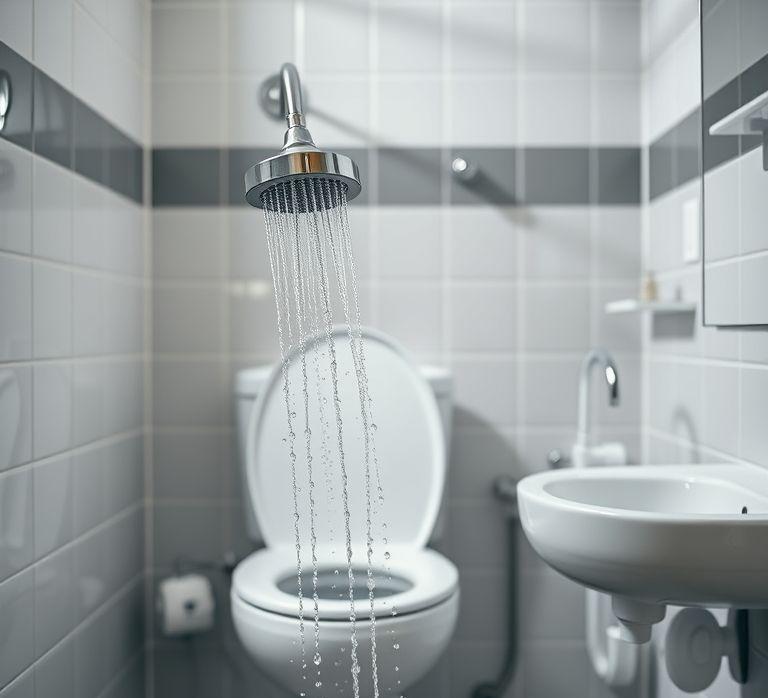Beyond Low-Flow: Smart Toilets, Intelligent Showerheads, and Faucets That Actively Save Water
Tired of simply relying on low-flow fixtures? The latest wave of smart bathroom technology offers a proactive approach to water conservation. From toilets that learn your habits to showerheads that optimize temperature, discover how intelligent fixtures can dramatically reduce your water footprint and save you money.
Smart Toilets: Flushing Smarter, Not Harder
Smart toilets represent a significant leap beyond traditional low-flow models. They incorporate a range of technologies to minimize water usage without sacrificing performance. One of the key features is automated flow control. These toilets use sensors to detect the type of waste (liquid or solid) and adjust the flush volume accordingly. This eliminates the need for manual dual-flush systems, ensuring optimal water usage for every flush. Some high-end models even feature learning algorithms that analyze usage patterns over time and further refine flush volumes based on individual needs.
Beyond flushing, some smart toilets offer additional features that contribute to water savings and hygiene. Leak detection systems can identify even minor leaks, alerting you to potential problems before they escalate and waste significant amounts of water. Self-cleaning functions, often utilizing electrolyzed water, reduce the need for harsh chemicals and excessive scrubbing, further minimizing water consumption. Investing in a smart toilet is not just about water conservation; it’s about optimizing hygiene and convenience as well.
Intelligent Showerheads: Optimizing Temperature and Flow
Waiting for the shower to heat up wastes gallons of water. Intelligent showerheads address this problem with temperature optimization technology. Many models feature a “pause” mode that allows you to temporarily stop the water flow while lathering or shaving, preventing unnecessary water loss. Some advanced showerheads even incorporate a recirculation system that pumps the cooled water back into the water heater until the desired temperature is reached, eliminating the initial cold-water burst altogether.
Moreover, user presets allow multiple users to save their preferred temperature and flow settings. This eliminates the need for constant adjustments, preventing water wastage. Real-time usage tracking provides valuable insights into your showering habits, allowing you to identify areas where you can conserve water. Some showerheads connect to mobile apps, providing detailed water usage reports and personalized tips for reducing your water footprint.
Smart Faucets: Precise Control and Usage Monitoring
Smart faucets offer a blend of convenience and water conservation. Many models incorporate motion sensors that activate the water flow only when needed, eliminating the need to leave the faucet running while brushing your teeth or washing your hands. This simple feature can save a significant amount of water over time. Some smart faucets also include temperature control features, allowing you to pre-set your desired water temperature, preventing scalding and minimizing water wastage.
Furthermore, usage monitoring capabilities provide valuable data on your water consumption habits. Some smart faucets connect to mobile apps, allowing you to track your daily, weekly, and monthly water usage. This information can help you identify areas where you can improve your water conservation efforts. Leak detection is another valuable feature, alerting you to potential problems before they escalate and waste water. By combining convenience with water-saving technology, smart faucets offer a practical and effective way to reduce your water footprint.
The Future of Water Conservation in the Bathroom
The integration of smart technology into bathroom fixtures represents a significant step towards sustainable living. By leveraging automated flow control, usage tracking, temperature optimization, and user presets, these intelligent devices actively conserve water without sacrificing comfort or convenience. As technology continues to evolve, we can expect even more sophisticated water-saving features to emerge, further reducing our environmental impact and lowering our utility bills.
In conclusion, smart toilets, intelligent showerheads, and smart faucets offer a comprehensive approach to water conservation in the bathroom. They go beyond simple low-flow designs by actively managing water usage, providing valuable insights into consumption patterns, and adapting to individual needs. By embracing these innovative technologies, homeowners can significantly reduce their water footprint and contribute to a more sustainable future. Investing in smart bathroom fixtures is an investment in both your wallet and the environment.



